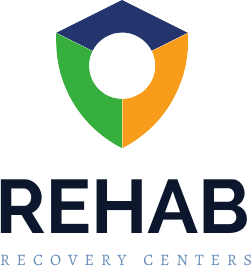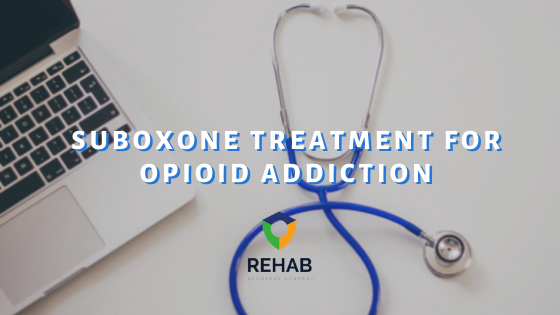Table of Contents
If you or someone you love is struggling with an addiction to opioids, Suboxone treatment may be something to consider. Getting clean from opioids is never easy, and the withdrawals that come shortly after people stop using are difficult to deal with. Fortunately, FDA-approved medications, such as Suboxone, can help make opioid detox and recovery easier.
Suboxone is a brand-name medication containing buprenorphine and naloxone. It is commonly used during detox to help reduce the severity of opioid withdrawals, but it may also be used throughout treatment to help minimize drug cravings. However, Suboxone alone is not a treatment for opiate addiction. Instead, addiction treatment programs that use Suboxone should do so in combination with behavioral therapy and peer support. When used as part of a comprehensive medication-assisted treatment program, Suboxone is considered the gold standard for treating opioid addiction.
Suboxone (Buprenorphine/Naloxone)
When people abuse opioids for an extended period of time, they will become physically and mentally dependent on the drug. Once physical dependency occurs, individuals who stop taking the drug experience difficult, flu-like withdrawal symptoms. Although opioid withdrawal is not considered life-threatening in most situations, it is considered one of the more challenging and uncomfortable types of drug withdrawal.
Some symptoms people experience during opioid withdrawal include watery eyes, runny nose, muscle pain, aches, sweating, chills, nausea, and diarrhea. However, people may also experience anxiety, irritability, depression, and intense drug cravings. The combination of the painful physical symptoms and daunting psychological cravings makes opioid withdrawal terribly difficult to endure without medical intervention. This is where Suboxone treatment comes in.
Suboxone is a U.S. Food and Drug Administration (FDA) approved medication containing buprenorphine and naloxone. Buprenorphine is a partial opioid agonist, meaning that it binds to opioid receptors in the brain in order to partially activate the receptors. The brain then detects opioids in the brain and stops experiencing withdrawal. Naloxone, on the other hand, is an opioid antagonist. Its job is to prevent misuse of the medication. When people take opioids while on Suboxone, naloxone helps block the euphoric effect of opioids, helping reduce people’s desire to use them. These drugs work together to reduce withdrawal symptoms during detox and mitigate cravings throughout treatment and early recovery.
Taking Suboxone: What You Need to Know
Suboxone is considered a safe and highly effective treatment method for opioid addiction when it is prescribed by a certified provider and is taken correctly. Only doctors who have completed specialized training and certification can prescribe Suboxone. Before patients can begin taking Suboxone, they must be experiencing withdrawal symptoms and be clean from opioids for between 10-12 hours, depending on which type of opioid they are addicted to.
The medication comes in the form of a sublingual film that dissolves under the tongue. When taking the film, it is important to only take how much your doctor prescribed and to avoid talking or chewing while it is dissolving.
Since Suboxone is a depressant drug, people may experience some minor effects such as pain relief, calmness, reduced stress, and relaxation. Some patients may experience minor side effects that should wear off within a week, including:
- Headache
- Insomnia
- Depression
- Sweating
- Constipation
- Nausea
- Burning tongue
- Redness in mouth
- Back pain
In rare cases, more severe side effects may occur that require immediate medical attention, such as:
- Allergic reaction (rash, hives, or swelling of lips, tongue, and throat)
- Breathing problems
- Coma
- Hormone problems
- Liver damage
- Withdrawal symptoms
Suboxone may interact negatively with some medications, including acetaminophen, fluoxetine, HIV-treatment drugs, niacin, contraceptives, and cholesterol medications. Moreover, some people may abuse and become addicted to Suboxone. As a result, it is vital that patients participating in Suboxone treatment for opioid addiction follow up with their doctor and take the medication correctly.
The Suboxone Treatment Process
Opioid addicted patients usually begin taking Suboxone at the detox phase of treatment. People who require medically assisted detox will take their first dose of Suboxone between 10-12 hours after taking their last dose of opioids. The drugs naloxone and buprenorphine then work together to prevent withdrawal symptoms, making detox a safe and comfortable process.
After a patient is deemed stable and ready to leave detox, he or she will discuss with a doctor and addiction specialist whether or not the continuing use of Suboxone is appropriate. Some people will only take the medication during detox, while others will continue taking it until they are ready to handle their recovery independently.
The most important aspect of Suboxone treatment for opioid addiction is that Suboxone is used in combination with a comprehensive addiction treatment program. By providing patients with medication, counseling, behavioral therapies, and peer support, they can obtain an individualized, “whole-patient” approach that set’s them up with the best opportunity for success in recovery.
During treatment, patients will continue following up with their doctor while taking Suboxone and participating in therapy. Therapy for addiction is usually held in both group and individual sessions, to achieve the goals of individualized treatment as well as peer support. The purpose of counseling and behavioral therapy is to help patients understand the underlying causes of their substance abuse. In doing so, they can begin identifying destructive behaviors, becoming familiar with triggers, and learning how to cope with difficult emotions without the use of drugs and alcohol.
Suboxone aids the opioid addiction treatment process by continuing to eliminate drug cravings. Even after physical withdrawal symptoms wear off, many individuals experience cravings that last for weeks or months after getting sober. Suboxone allows patients to forget about their cravings and focus fully on their individual recovery progress.
Benefits of Using Suboxone in the Treatment of Opioid Addiction
The FDA has approved many drugs for treating opioid addiction in addition to Suboxone. However, all are proven effective when combined with individualized addiction treatment. In fact, SAMHSA reports that medication-assisted treatment programs provide more comprehensive and individual approaches to treatment than traditional treatment methods do.
Although the ultimate goal of Suboxone treatment is for patients to achieve full abstinence and independence, there are many benefits of using this treatment approach. These include:
- Improved patient survival rates
- Increased treatment retention rates
- Reduced rates of illicit opioid use and criminal activity
- Improved ability to gain and maintain employment
- Better birth outcomes in babies born to opioid-addicted expecting mothers
- Reduced risk of HIV and hepatitis C transmission
That being said, Suboxone isn’t for everyone, so you should speak to a dedicated treatment provider to determine which treatment approach will best suit your needs.
Locate a Suboxone Treatment Provider Near You
If you or a loved one is battling an addiction to prescription painkillers or illicit opioids, Suboxone may be able to help you get through detox and manage your cravings. To learn more about Suboxone, give us a call. Or, use our convenient treatment locator to find a drug and alcohol rehab center near you.
Get Help Today
Don’t go through the process of recovery alone. There are people who can help you with the struggle you’re facing. Get in touch with one today.


